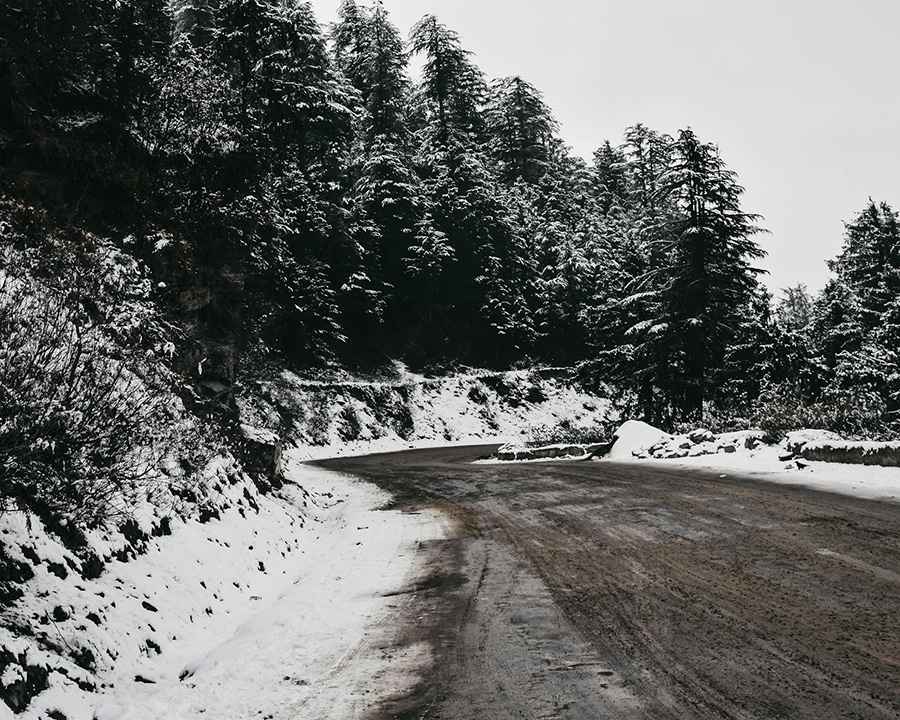Off the Beaten Track: 7 Remote Indian Roads Worth Every Rupee
India is home to some of the world’s most dangerous roads, extreme and unforgettable driving experiences, and terrain that tests both driver and machine. While routes like the Leh Manali Highway or Khardung La are well-known among thrill-seekers, there are lesser-travelled roads that offer even more heart-stopping experiences. These are the roads that don’t make it into every travel blog, but perhaps should.

Rugged, remote, and often risky, they demand preparation, courage, and a good stash of Indian rupees… especially in remote regions where ATMS and card machines are as rare as a sunny day during monsoon. Buckle up!
1. Killar–Kishtwar Road (Jammu & Kashmir)
Few roads command the same mix of fear and fascination as the Killar–Kishtwar Road in the Kishtwar district of Jammu, part of the wider Jammu and Kashmir region. Carved into a cliff face without railings or barriers, this narrow road hugs the mountain precariously, with sheer drops of hundreds of metres below. The road is located in the remote Pangi Valley, and driving here means navigating loose gravel, rockfall zones, and hairpin turns wide enough for just one vehicle. It’s regularly counted among the deadliest roads in India.
2. Photi La Pass (Ladakh)
Less famous than Khardung La, but just as extreme, Photi La Pass sits at a jaw-dropping 5,524 metres above sea level, making it one of India’s highest motorable roads. Located in Ladakh’s Changthang region near the village of Hanle, the road ascends through barren, lunar-like landscapes with minimal signage or infrastructure. The weather conditions can turn quickly, with snow flurries even in summer and violent winds sweeping across the pass. It’s a raw, isolated experience that will leave you breathless, in more ways than one.
3. Zojila Pass (Zoji La) – Srinagar to Leh
Connecting Jammu and Kashmir with Ladakh, Zoji La Pass is a key route along National Highway 1, not far from the Srinagar–Leh corridor. Though better known than some entries on this list, Zoji La still qualifies as one of the most dangerous roads in India, especially in winter when it’s often covered in snow and plagued by avalanches. This high mountain pass is a lifeline for supply trucks and military convoys, but it’s not for the faint of heart. The road surface is patchy, the curves are tight, and the drop-offs are terrifying. Snowploughs and bulldozers are often on standby to clear frozen ice from the route.
4. Kiphire–Thanamir Trail (Nagaland)
Switching from snow to jungle, the Kiphire–Thanamir Trail in Nagaland is an 85-km off-road track that winds through steep hills, muddy valleys, and thick rainforest. While it's not located in the Himalayas, its treacherous terrain and isolation easily earn it a place among India’s most extreme drives. There are no fuel stations, no mechanic shops, and no digital payments here, only dense green wilderness and the warm welcome of remote tribal villages. You’ll need rupees, stamina, and a sense of adventure to make it through.
5. Ambenali Ghat (Maharashtra)
Situated far from the northern passes, Ambenali Ghat links Mahabaleshwar to Poladpur across the Western Ghats. This 40-km road offers tight hairpin turns, steep descents, and mist-covered curves, especially dangerous during monsoon season when visibility plummets and the road turns slick. Though it doesn’t sit at an extreme elevation, the combination of weather conditions, poor lighting, and frequent landslides makes it one of the deadliest roads in India outside of the Himalayas.
6. Baytakhol Road (Goa)
This short but eerie stretch near Ponda in Goa is infamous not for its altitude, but for local legends of ghostly apparitions. Still, beyond folklore, the road is genuinely hazardous due to blind bends, poor lighting, and frequent accidents, especially at night. It’s also narrow and prone to illegal parking and stray cattle, creating chaos around every corner. While it’s not the highest road in the world, it’s a reminder that danger on the road can come in many forms.
7. NH-33: Sahibganj to Farakka (Bihar–Jharkhand–West Bengal)
National Highway 33 connects Bihar, Jharkhand, and West Bengal, and is notorious for its broken tarmac, bottlenecks, and overloaded lorries. Though it's not in the mountains, the road is located in a region plagued by poor infrastructure, making it a test of endurance for any driver. Deep potholes, narrow bridges, and long stretches without petrol stations make this one of the most frustrating and dangerous roads in India, particularly for those who underestimate how much they’ll rely on cash for repairs, food, and emergency supplies.
Why Indian Rupees Are a Lifeline on Roads Like These
Whether you're braving frozen mountain passes like Zoji La or slipping through muddy trails in Nagaland, one thing remains constant: you’ll need cash. In many remote parts of India, card payments and mobile wallets are unavailable, and ATMS are few and far between. Carrying Indian rupees allows you to buy fuel, pay for roadside food, tip local guides, or pay tolls, sometimes even in places where the tollbooth is a wooden plank across the road. To avoid delays and complications, it’s wise to order your currency before you travel. At Manor FX, we specialise in exotic and hard-to-source currencies like the Indian rupee. We make it easy to get your cash in advance, delivered securely, so you’re not left stranded when digital payments fail.
Takeaways
India’s remotest roads offer a mix of risk, beauty, and sheer exhilaration. From the high mountain passes of Ladakh to the winding ghats of Maharashtra, each stretch tells its own story. But wherever your tyres take you, make sure you’re prepared, not just with maps and water, but with the local currency to keep your journey rolling.After all, when the asphalt ends and the wild begins, every rupee counts.
Image source: https://www.pexels.com